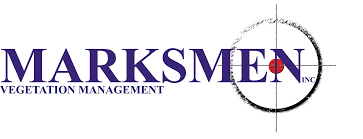What is the Difference Between Tree Trimming and Pruning?
/Caring for trees is a crucial part of maintaining a safe, attractive, and functional property.
Tree trimming and pruning are two key methods of tree maintenance, each with its own purpose and benefits.
Understanding the difference between these practices is important for keeping trees healthy, preventing potential safety issues, and preserving the overall appearance of their landscape.
By learning more about trimming and pruning, you can make informed decisions that help protect your property and maintain the beauty of your outdoor spaces.
Why Does Tree Maintenance Matter?
Tree maintenance plays a vital role in the safety, health, and appearance of your property.
Well-maintained trees are less likely to develop weak or diseased branches that could break and cause damage during storms.
Regular care also helps trees grow stronger and live longer, preserving the beauty and value they bring to your landscape.
Beyond aesthetics, tree maintenance supports safety by managing overgrowth that could interfere with power lines, structures, or visibility on roadways.
Investing in regular upkeep not only protects your property but also contributes to a healthier, more vibrant outdoor environment.
What is Tree Trimming?
Tree trimming focuses on cutting back overgrown branches to improve the shape, appearance, and safety of a tree.
This process helps maintain a clean, polished look for trees and shrubs while addressing issues like overgrowth that could block sunlight, interfere with structures, or create safety hazards.
Purpose of Tree Trimming
The primary goal of tree trimming is to manage the tree’s structure and keep it looking tidy.
Trimming also helps promote healthy growth by removing overgrown or unnecessary branches that could stunt the tree’s overall development.
It also reduces the risk of falling limbs and prevents branches from growing too close to buildings, power lines, or pathways.
When to Trim Trees
Trees are typically trimmed during their dormant season, which is often in late fall or winter.
Trimming during this time minimizes stress on the tree and allows it to recover before its growing season begins.
However, trimming may also be done at other times if branches are posing a safety risk or interfering with structures.
Tools Used for Tree Trimming
Tree trimming requires tools designed for precision and efficiency.
Common tools include:
hand pruners for small branches
loppers for thicker limbs
pole saws for reaching higher sections
For larger jobs, professional equipment such as chainsaws or mechanical lifts may be used to handle heavy or hard-to-reach branches.
Proper tools not only make the job easier but also protect the tree from unnecessary damage during the process.
What is Tree Pruning?
Tree pruning focuses on selectively removing dead, diseased, or damaged branches to improve the overall health and structure of a tree.
This method supports growth and prevents the spread of disease while supporting the long-term vitality of the tree.
Purpose of Tree Pruning
The main purpose of pruning is to maintain the health of the tree by eliminating problem areas, such as deadwood or diseased branches.
Pruning also helps shape the tree, promoting a strong structure and reducing the risk of branch failure.
Overall, pruning supports healthy growth and extends the tree's lifespan.
When to Prune Trees
The best time to prune most trees is during their dormant season, typically in late winter or early spring, before new growth begins.
Pruning during this period helps minimize stress on the tree and allows cuts to heal quickly.
However, damaged or hazardous branches can be removed at any time of year to address safety concerns or prevent further issues.
Tools Used for Tree Pruning
Tree pruning requires tools designed for clean, precise cuts to avoid unnecessary damage.
Common tools include pruning shears for small branches, loppers for thicker growth, and pruning saws for larger limbs.
In some cases, specialized tools like pole pruners or hand saws are used for higher or hard-to-reach branches.
Key Differences Between Tree Trimming and Pruning
Tree trimming and pruning are both important tree care practices, but they serve different purposes and are used in different situations.
While trimming focuses on shaping and managing overgrowth, pruning is more concerned with maintaining tree health and addressing structural issues.
Goals of Each Process
The primary goal of tree trimming is to control overgrowth, maintain a neat appearance, and address safety concerns caused by encroaching branches.
Pruning, on the other hand, is focused on the tree’s health, removing dead, diseased, or weakened branches to promote growth and prevent future problems.
Frequency of Maintenance
Trimming is typically performed more frequently, often once or twice a year, depending on the rate of growth and the tree’s location.
Pruning is done less often, usually every one to three years, depending on the tree's condition and species.
Regular schedules for both processes help maintain tree health and appearance over time.
Impact on Tree Health and Growth
Trimming has a more immediate visual impact, shaping the tree and reducing overgrowth, but it doesn’t significantly influence the tree’s long-term health.
Pruning, however, directly supports the tree’s health and growth by removing problem areas and encouraging stronger, healthier development.
Both processes contribute to the overall well-being of the tree when done correctly.
Choosing the Right Approach for Your Trees
Selecting the right care method for your trees depends on several factors, including the type of tree, its health, and its stage of growth.
Type of Tree: Different species have unique growth patterns and maintenance needs. Fast-growing trees may need frequent trimming while slower-growing or ornamental trees often benefit from strategic pruning.
Season: Trimming is often done during the growing season to manage overgrowth, while pruning is best performed during the dormant season to minimize stress and promote recovery.
Tree Health: If the tree has dead, diseased, or damaged branches, pruning is crucial to remove problem areas. Healthy but overgrown trees benefit most from trimming to maintain shape and size.
Growth Stage: Young trees may need light pruning to establish structure, while mature trees require targeted care to maintain health and stability.
When you take these things into consideration, you can determine whether trimming or pruning is the best approach to maintain your tree’s health, appearance, and safety.
When to Call in the Professionals
There are times when tree care is best left to professionals.
If a tree has large, overhanging branches or is located near power lines or structures, specialized expertise and equipment are needed to handle the job safely.
Signs of disease, such as discolored leaves, cracks in the trunk, or fungal growth, also warrant professional attention to assess the extent of the damage and recommend the right course of action.
If significant pruning or trimming is required for large or mature trees, hiring a trained team can help protect the tree’s health while preventing potential risks.
Professionals have the tools, knowledge, and experience to manage these challenges efficiently, saving homeowners time and reducing the likelihood of accidents or costly mistakes.
Tree Trimming or Pruning: Choosing the Right Approach
Proper tree care is essential for maintaining a safe, healthy, and visually appealing property.
If you’re unsure about the best course of action for your trees or need professional assistance, Marksmen Vegetation is here to help.
Contact us today to schedule an assessment and discover how our expert team can support your tree care needs.




